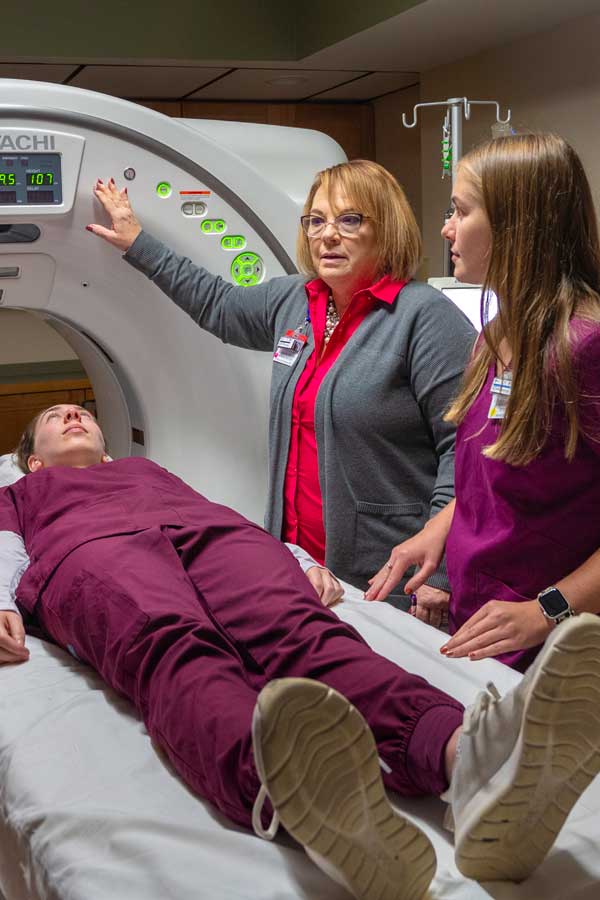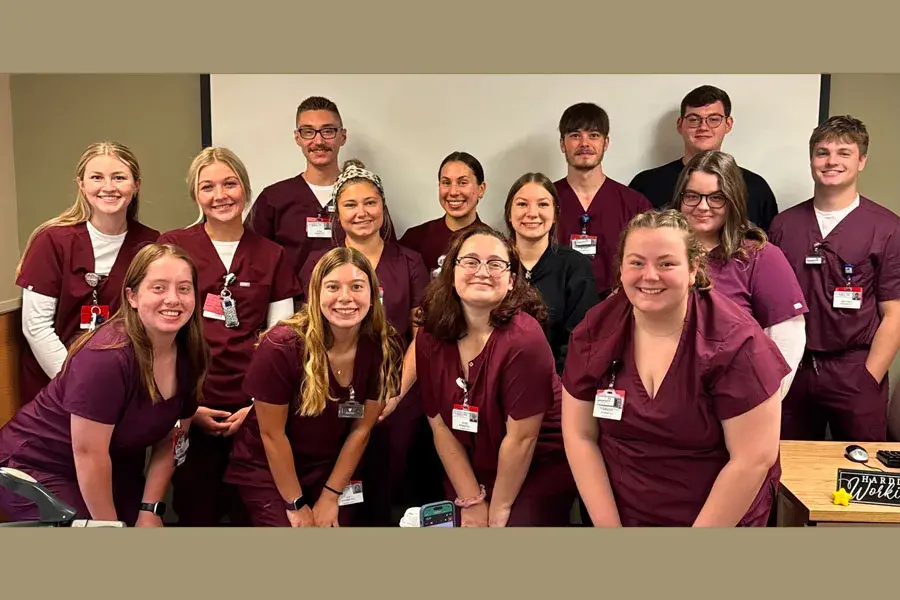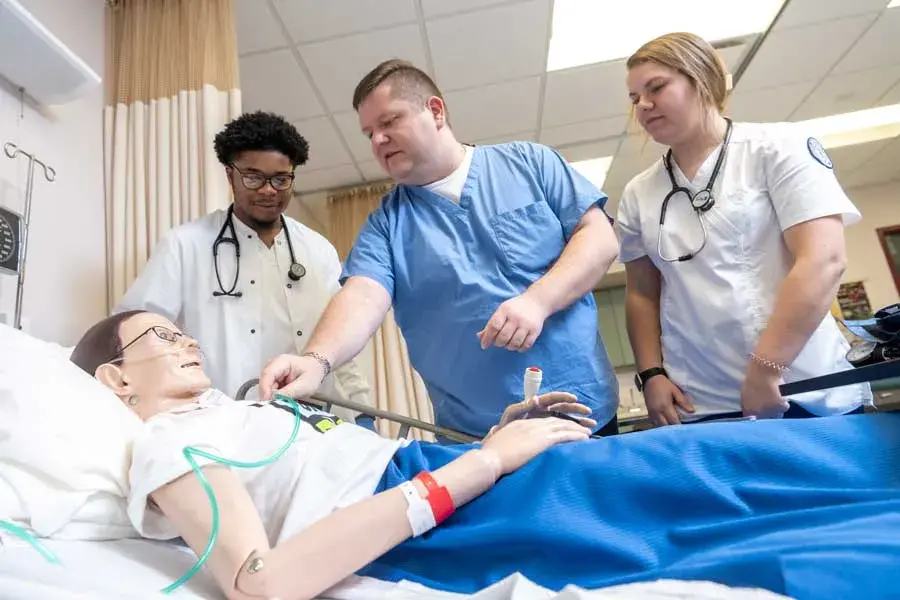
Radiological Science - BS
Join this dynamic profession that is in great demand and provide essential services to patients.
Why study radiological science at Pitt-Bradford?
Radiological science involves technologists use of x-rays to see the inside of the human body. Health care today utilizes an array of imaging technologies such as ultrasound, computed tomography (CT), nuclear medicine, positron emission tomography (PET) and magnetic resonance imaging (MRI) to diagnose or treat injuries and/or diseases, which students will have the opportunity to learn.
What will I learn?
The Bachelor of Science (BS) in Radiological Science includes a liberal arts core curriculum. On our campus, you’ll spend your first two years taking courses in psychology, sociology, human anatomy and physiology, modern physics, technical writing, and bioethics.
During your third and fourth years, you'll receive hands-on training at the School of Radiography at Bradford Regional Medical Center, and our affiliated clinical sites.
What can I do with a degree in radiological science?
Radiographers work in hospitals, physicians and clinical practice offices, trauma and emergency care centers, surgical centers, and outpatient imaging centers and operate some of the healthcare industry’s most sophisticated technology.
Employment Opportunities
- Interventional Radiology
- Chest Radiology
- Computed Tomography (CT)
- Emergency Radiology
- Gastrointestinal Radiology
- Genitourinary Radiology
- Head and Neck Radiology
- Musculoskeletal Radiology
- Neuro Radiology
- Pediatric Radiology
Students admitted to this program start their studies as a Pre-Radiological Science major, taking courses that meet our graduation requirements. At the end of the first year of study, a student needs to have at least a 2.5 GPA to progress to the second year and maintain that GPA throughout the second year.
During the spring term of the sophomore year, students apply to BRMC for admission into the School of Radiography. The deadline for applications is Feb. 1. To be admitted, a student must be in good academic standing.
There are limited numbers of openings at BRMC – typically around 16 each year -- so preference is given to students who have performed well academically. Generally, that means having at least a 2.5 GPA and meeting all course requirements.
If you are already a certified RT, 50 credits from your accredited radiographic program will be applied toward the 120 credits you’ll need to graduate from Pitt-Bradford with your bachelor’s degree.
-
RADSC 1451
Capstone: RADSCThis course focuses on enabling the student to synthesize knowledge about the professional role within the health care delivery system. Theory related to leadership and management in radiology will be presented. Health care policy practice issues will also be presented. -
PHYS 0103
Concepts Of Modern PhysicsA basic examination of essential topics including mechanics, properties of matter, heat, sound, electricity and magnetism, light, atomic and nuclear physics, relativity and astrophysics.
Program-Related News

Enrollment up in radiological science
Graduates have 100% placement rates for last five years.

Fund for Mount Jewett students reaches $1 million
Preference for Turnquist scholarships given to math and science majors.

Open house planned for nursing, radiological science
Meet faculty and tour nursing suite on campus.